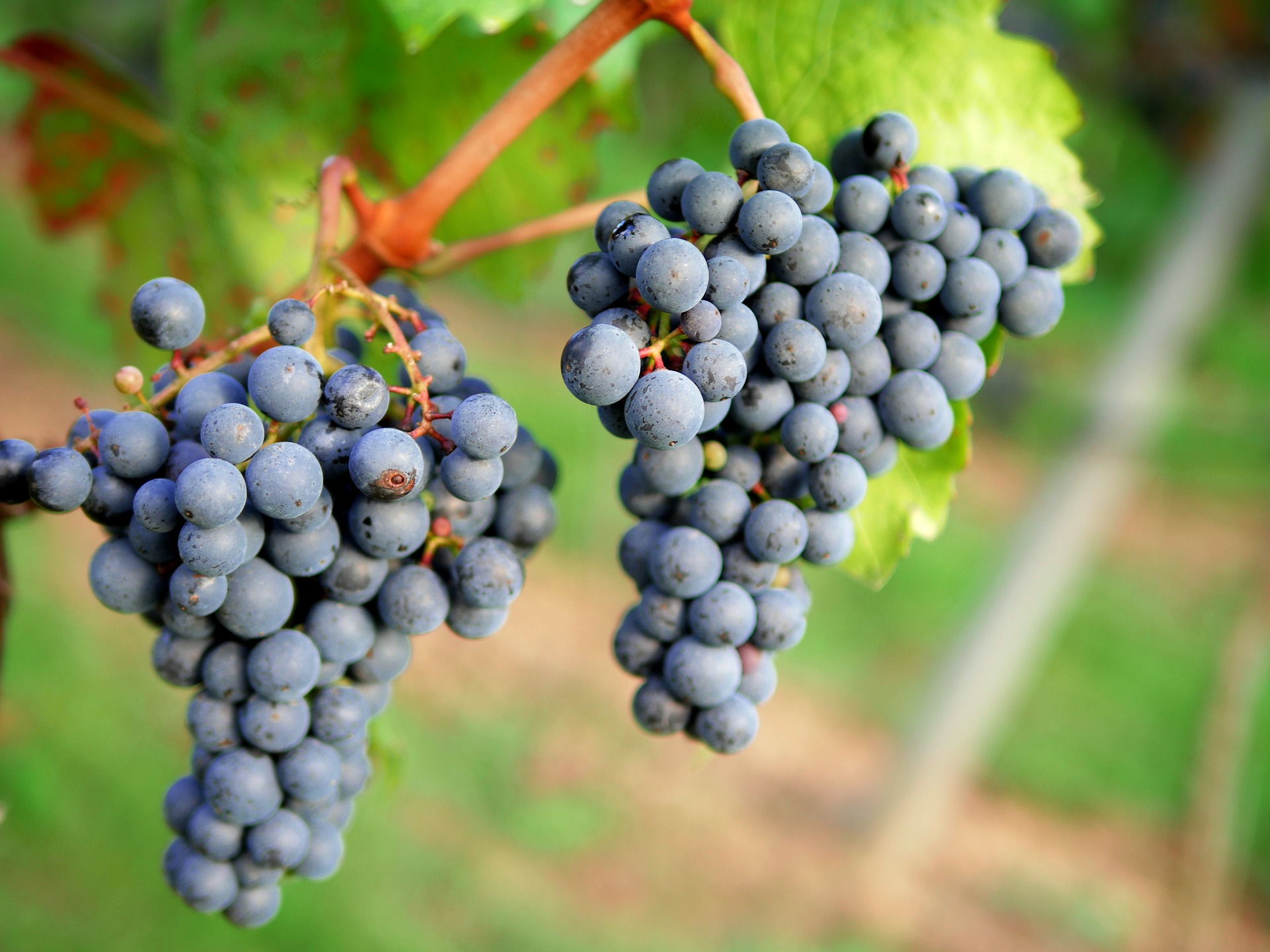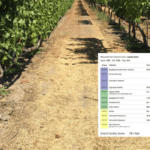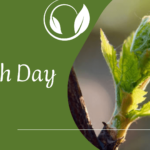Every winemaker wants to achieve the best possible quality of the wine. And this is directly related to achieving optimal grape maturity. To achieve this, vine growers use a wide range of vineyard management techniques from canopy management, irrigation, cropping, etc. And as we learned in one of the previous blog posts, knowledge about grapevine anatomy and its functions is a must-have to achieve the best possible quality. Therefore, in this post, we are sharing some knowledge about grape cluster and berry structure which can help you when optimizing grape maturity.
Grape cluster structure
The grape cluster consists of peduncle, cap stems (also known as pedicels), rachis, and several berries. Depending on the variety, there is a big difference in the size and shape of the cluster, as well as in the shape, size, and color of the berries. Each berry “hangs” on the pedicel.
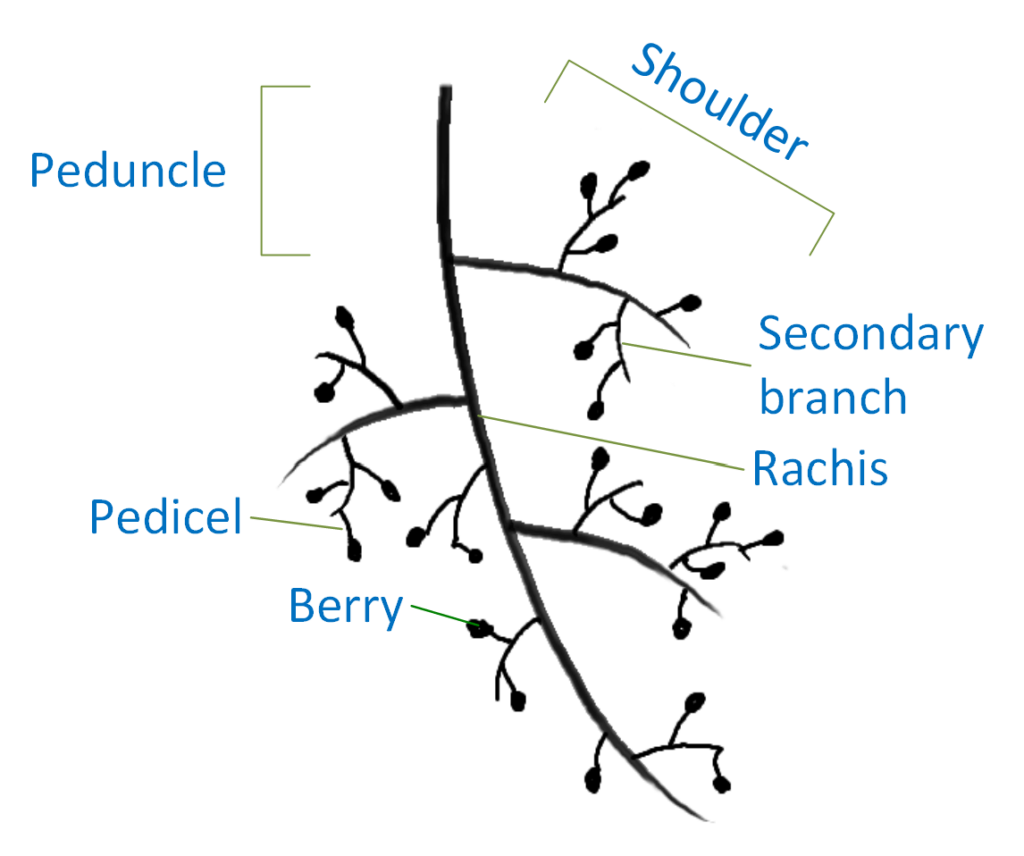
The weight of the clusters varies according to the grape variety and vintage, on average between 80 and 385 g, while some hybrids are known to develop much heavier clusters. Peduncle represents around 3%-8% of the total weight of the cluster, while the berries represent 92%-97% of the weight.
Grape berry structure
Each berry is made of skin, flesh (or pulp) with the juice, and seeds. Berry consist of approximately 10 to 20% of skin, 75%-85% of flesh (including juice), and 2%-5% of seed; depending on the vine variety.
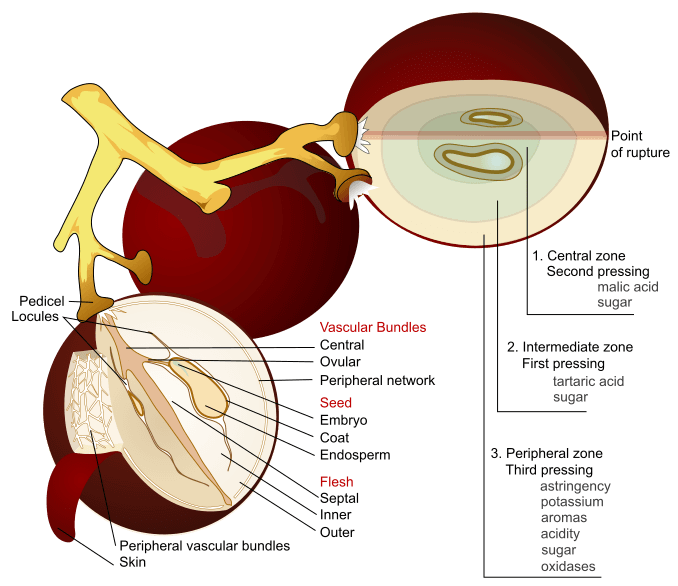
Skin of the berry is covered by a waxy layer, which helps prevent water loss through evaporation. Under the skin layer, there is a layer of cells called the hypodermis, which accumulates phenolic compounds when the berry matures. Phenolic compounds are chemical compounds which influence the aroma, flavor, and color attributes of the berries. Those are the key factors contributing to wine quality and sensory characteristics. One of those compounds are also tannins, which influence the flavor notes of the wine. Tannin compounds are accumulated during early berry development (prior to veraison) and are associated with bitterness and astringency in the taste of wine. Interesting is that their concentration doesn’t change a lot at grape berry maturation, however, the chemical structure does, and that change influences the taste, resulting in less astringency, less bitterness, and a smoother mouthfeel. At veraison, the pigments and aromatic compounds, such as terpenoids, which are responsible for fruity aromas begin to accumulate.
Flesh of the berry consists of the cells that contain large vacuoles, in which sugar accumulates during the grape berry ripening. Sucrose (sugar) is transported into the cells from the vine canopy and there, it is broken down into glucose and fructose. Acids (among others also tartaric and malic acid) and phenolic compounds are also concentrated in these vacuoles. During berry maturation, acids and tannins, located in the flesh, tend to decline. The size of the berries is determined by the number of the cells in the berry flesh, and the possibility of the enlargement of those cells. After veraison, those vacuoles expand or shrink depending on the water uptake or loss.
Grape seed is composed of an outer seed coat, the endosperm, and the embryo. The endosperm nourishes the embryo during early growth. Seeds grow during fruit maturation, and produce growth regulators that influence the fruit size. The seed coat also contains tannins, and as the berries mature, the concentration of tannins in the seed coat reduces.
Source:
- William McGlynn. 2012. Basic Grape Berry Strucutre. eXtension.org [online]
- Kennedy, James A.2002. Understanding grape berry development, Practical Winery and Vineyard, July/August 2002. [online]

